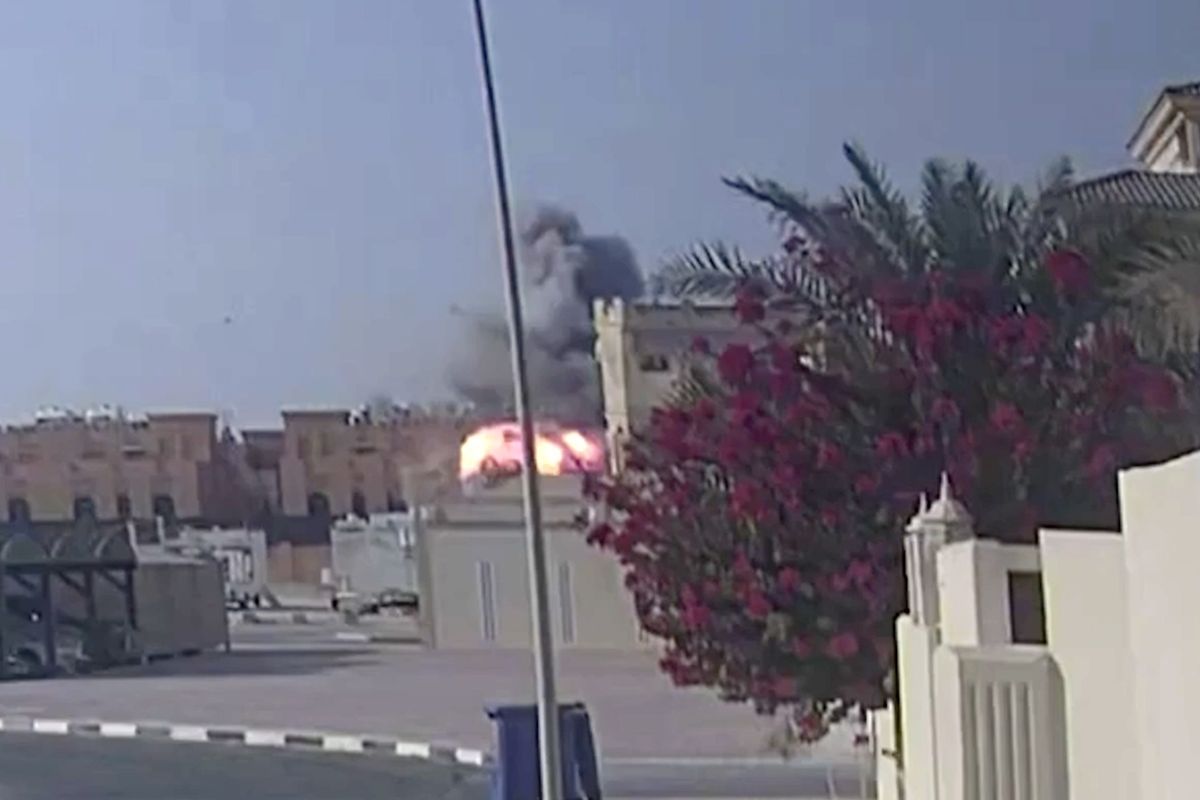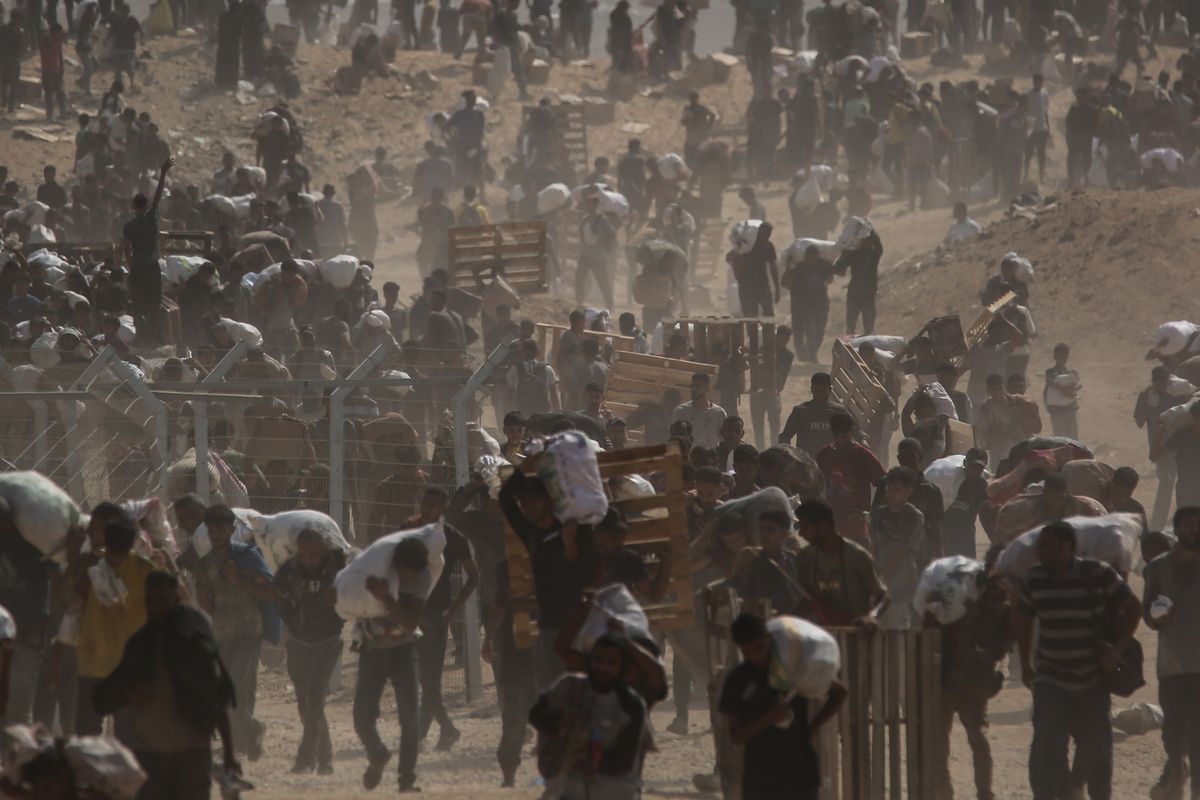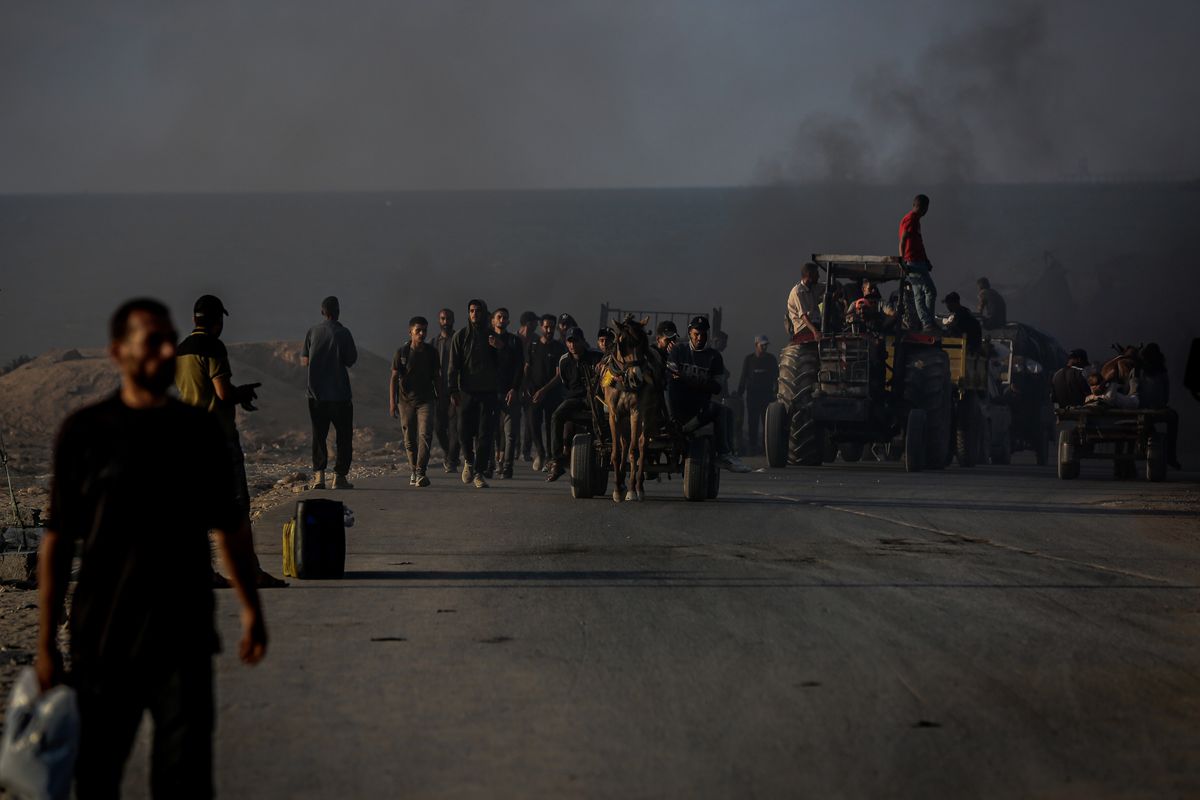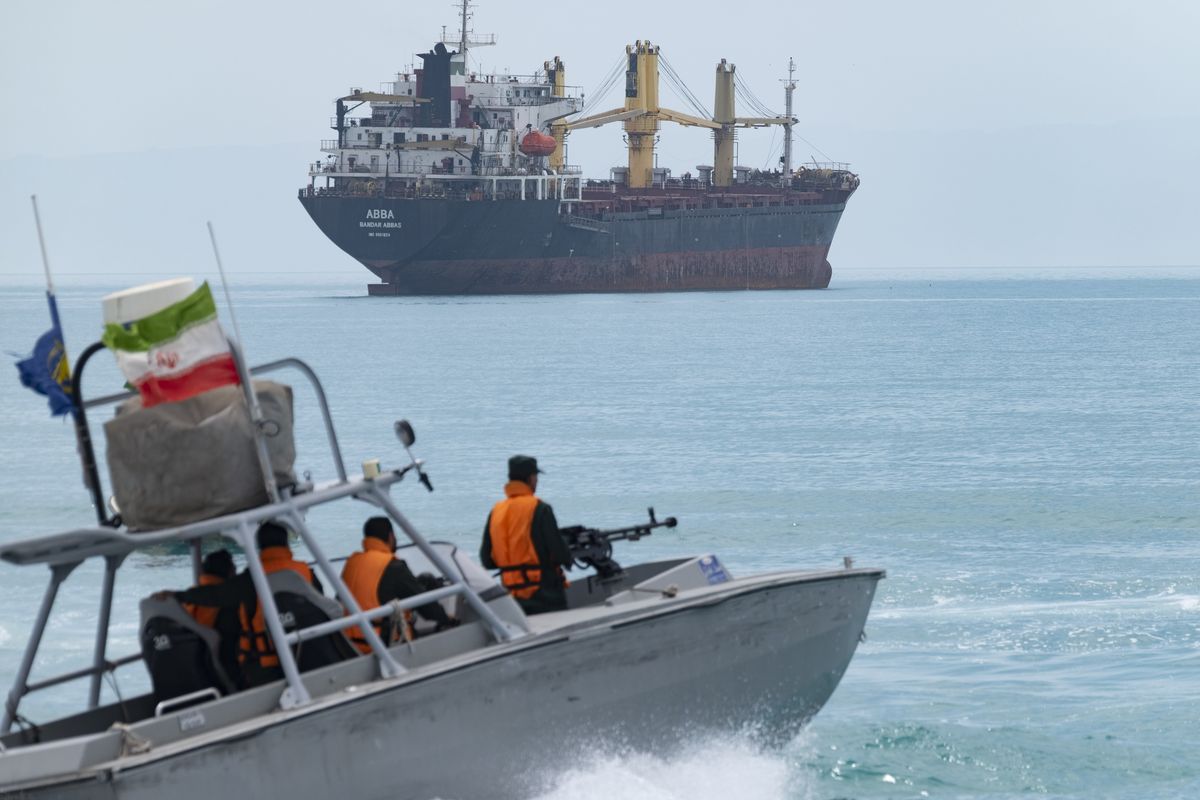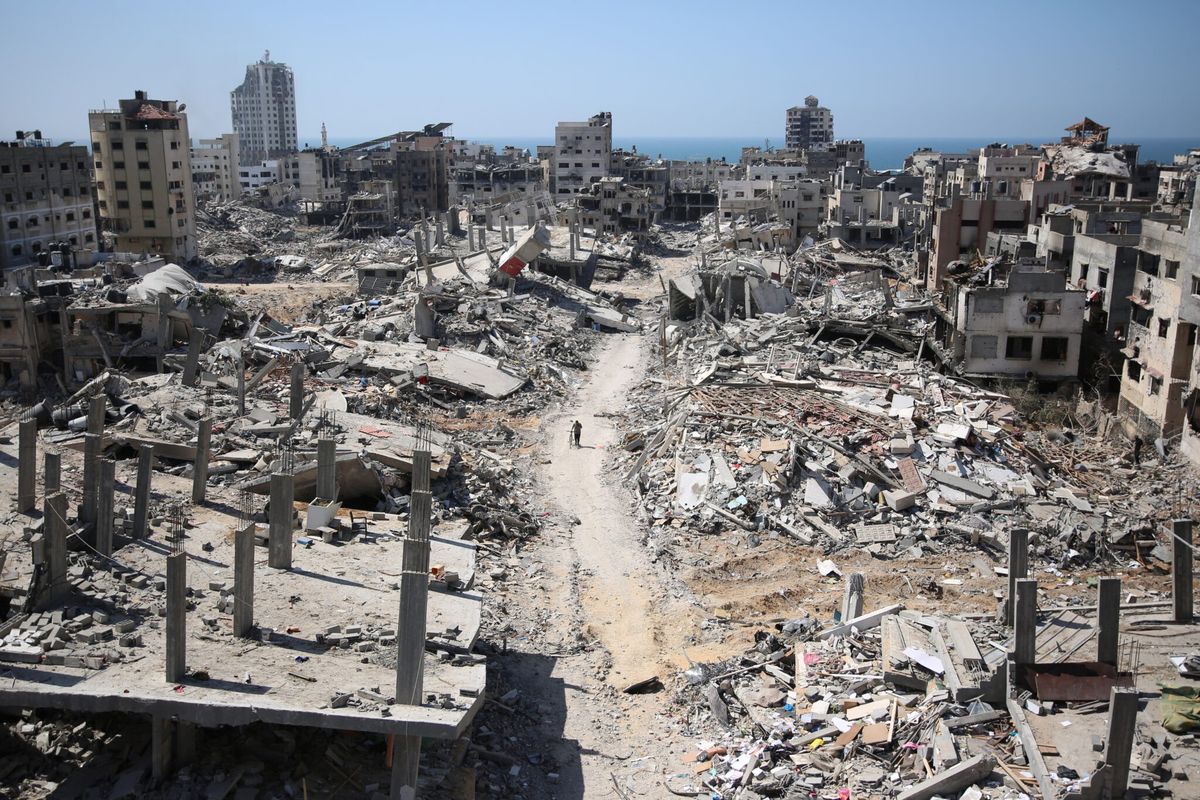SUBSCRIBER+EXCLUSIVE REPORTING — When Ukraine’s top commander said late last year that Russia’s war in Ukraine had reached a stalemate, Ukrainian President Volodymyr Zelensky rejected the notion and publicly rebuked his then-top General Valery Zaluzhny. The mere suggestion of a battlefield stalemate, Zelensky said, “eases the work of the aggressor,” and as for the merits of the assessment, he was blunt: “This is not a stalemate.”
That was nearly three months ago. Now, the word “stalemate” is coming up again. This time, in Israel’s war against Hamas, and the pushback has been just as forceful. With analysts questioning Israel’s ability to achieve its goal of completely destroying Hamas, Israeli Prime Minister Benjamin Netanyahu is pushing back.
As his office put it last week, “The P.M. is leading the war on Hamas with unprecedented achievements in a very decisive manner.” In a January 25 speech, Netanyahu repeated the promise of “total victory over Hamas,” and the safe return of 130 hostages still being held.
In other words, no stalemate here. This war will be won.
The word ‘stalemate’ itself doesn’t typically provoke such strong reactions. It may not be what you want in a negotiation or in most forms of competition but in war, it’s not always synonymous with disaster. Right now, however, in the world’s most crucial war zones and arguably the most critical foreign-policy theaters for the United States, thoughts of a ‘stalemate’ both demoralizing and dangerous.
“It’s hurtful to Ukraine’s cause for anyone there or here to say “stalemate,” because morale in Ukraine must be fragile heading into a third year of constant bombardment,” John McLaughlin, former acting director of the CIA, told The Cipher Brief. “It can diminish support outside of Ukraine by creating the impression that it’s too late to affect the outcome.”
The word may prove even more damaging in Israel, where deep divisions have opened over the military operation and its ability–or not–to free the hostages when many were expecting a brief and successful campaign to rout Hamas.
Stalemate in Gaza?
Israeli politicians and military commanders have yet to refer to the war against Hamas as a “stalemate”.
Last week, Gadi Eisenkot, a former army chief who is serving in the recently-formed Israeli war cabinet, gave an interview that sounded like the Israeli version of General Zaluzhny’s comments in Ukraine. Eisenkot said it was an “illusion” to believe that the mission in Gaza could be accomplished–and in particular, that the hostages could be rescued.
“The situation in Gaza is such that the war aims have yet to be achieved,” he said, a rare rebuke of the official Israeli view from a member of the war cabinet.
“Basically, it’s a stalemate,” Andreas Krieg, a war expert at King’s College London, told The New York Times last week. “It’s not an environment where you can free hostages. If you go into the tunnels and you try to free them with special forces, or whatever, you will kill them.”
A stalemate may seem an odd assessment, given that the Gaza conflict is far more dynamic than Russia’s war on Ukraine, and that it’s also a lopsided fight, pitting the region’s most modern military and a fighting army of 170,000 (more than half a million, counting reservists) against a Hamas force that was estimated at 25,000 before the war began. But what Israeli officials had hoped would be a rapid takedown of Hamas’ leadership and infrastructure, looks increasingly like a long and messy war.
While the Israel Defense Forces (IDF) claim to have destroyed more than 500 Hamas tunnels, they also say they have found at least 300 more–and every operation to locate and destroy these pathways and whatever lies within is painstaking and dangerous work.
Israeli military casualties have mounted, even as the IDF says it has moved to a less aggressive stage of the war. While the Israeli public has been riveted–understandably–by the fate of the hostages, the nation is now reckoning with an IDF death toll of more than 215 in Gaza. 24 Israeli soldiers were killed on January 22 alone.
Meanwhile, beyond Israel’s borders, the country has experienced an erosion of sympathy and support—a rapid-paced version of what followed the 2001 terror attacks in the U.S. On October 8, the day after the Hamas massacre, Israel had the support and sympathy of many nations around the world–an echo of the “We Are All Americans” headline that a French newspaper printed on September 12, 2001. If the U.S. squandered its support largely as a result of its 2003 invasion of Iraq, the Israelis lost theirs in the early days of their bombing of Gaza, as civilian deaths multiplied. This week, the number of civilians killed passed the 25,000-mark according to Gaza’s Health Ministry.
Does all this amount to a stalemate?
Ian Parmeter thinks so. In a piece titled “3 Months of Devastation in Gaza for This: Stalemate,” the Research Scholar at Australian National University’s Centre for Arab and Islamic Studies, ticked off Israel’s limited progress in achieving its goals (Hamas leaders still alive; significant Hamas infrastructure still in place; 130 hostages still in Gaza) and concluded, “The conflict still has a long way to run and may be headed towards stalemate.”
Jack Khoury, writing in the Israeli daily Haaretz, suggested a political stalemate as well.
“Most Israelis are fixated on a single idea – to continue destroying Hamas and working to free the hostages through militarily means, because what can't be solved by force can be solved by more force,” Khoury said. On the other side, “the Palestinians are also captive to their own idée fixe. They refuse to accept the claim that Israel's operation in Gaza is a proportionate response to the atrocities suffered by residents of southern Israel on October 7.”
Meanwhile, for Hamas, a stalemate may be welcome. To take the earlier metaphor, Hamas in this conflict is like the underdog who would be happy to play to a draw.
Can the Ukraine stalemate be broken?
In Ukraine, while the “s-word” made its most dramatic entry with General Zaluzhny’s November remarks (in addition to calling the war a “stalemate,” he told The Economist “there will most likely be no deep and beautiful breakthrough”), nothing since has done much to counter the commander’s assessment.
The frontlines have scarcely budged in the east and south, despite heavy fighting and losses on both sides. After a 2023 Ukrainian counteroffensive that failed to push the Russians back in a decisive manner, the U.S. and others have advised Ukraine to pursue a different strategy. Commonly described as “hold and build”—as in, “hold” what territory you have and “build” capacity for a fresh offensive, that may not come for months.
General Frank McKenzie, the former head of U.S. Central Command, called the situation a “near stalemate” in a conversation with The Cipher Brief this week, and said that spelled trouble for Ukraine.
“The clock, works more against the Ukrainians than it does for the Russians in this regard because of the potential uncertainty of continued funding for Ukraine and supplies. And then of course, I'm sure that Russia, they're looking to the [U.S.] presidential election and what potential political changes that might mean in the United States. So, I think we're at a difficult time.”
Ukraine’s biggest problem with the “stalemate” assessment may be that it hurts the case for western support. In a Catch-22 debate in Washington, supporters of such aid have said Ukraine cannot win (or one might say, cannot break the stalemate) without new and large-scale infusions of aid; skeptics push back by asking, why should we support an unwinnable war?
If the skeptics in Congress prevail, General McKenzie said, the stalemate may lead to more serious trouble for Ukraine. “I think it would be as bad as anything can be if we're unable to provide Ukraine with the resources they need to defend themselves at this critical time.”
In the end, of course, stalemate is only a word. McLaughlin says he doesn’t like the term and would prefer “static fighting,” or some other phrase that makes clear that neither side has abandoned hope.
No doubt those on both sides of the trenches of eastern Ukraine and the rubble-strewn alleys of Khan Younis fight each day with a firm belief that they can do so.
But “stalemate” is in conversations about both conflicts now–and it’s a word that no leader in Kyiv or Tel Aviv wants to hear.
Read more expert-driven national security insights, perspective and analysis in The Cipher Brief




